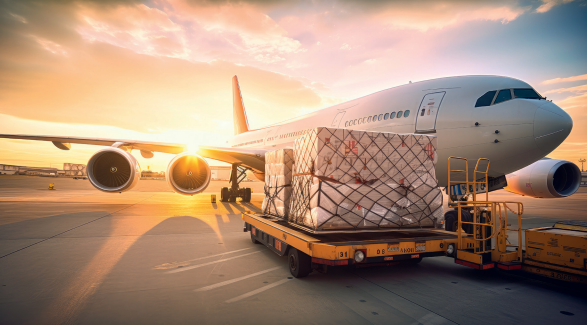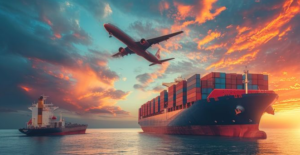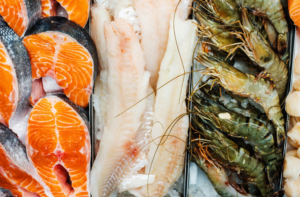Hurdles get higher

Bureaucracy, import duty and international tension are holding back seafood trade, the Norwegian Seafood Council says. Vince McDonagh reports
War, international unrest and inflation are creating major challenges for seafood exporters, the Norwegian Seafood Council is warning in its latest update on trade.
Salmon and related fish companies are operating in an extremely complex global environment, which is why the council has strengthened its market access team.
The Ukraine conflict and now the Middle East are two obvious examples of how war is affecting the globe. The knock-on effects after the pandemic have also led to more protectionism, stricter import regimes, new trade blocs and changes in the flow of goods.
The seafood route to Asia became longer because of Ukraine (European airlines no longer fly over Russia to reach Japan and China), and more countries now want to protect their own seafood industries. The rules are tightening even with friendly countries, says Børge Lotre, Acting Director of Market Insight and Market Access at the Seafood Council.

Børge Lotre (photo: Knut Åaserud); Øystein Valanes (photo: Norwegian Seafood Council)
Bureaucracy is also increasingly becoming an issue for international trade. New restrictions and requirements are constantly being introduced that make the export of seafood more challenging and existing trading blocs are building higher walls. Market access has also become less predictable.
“There are frequent changes in the laws and regulations for imports to a number of countries. Rules that applied yesterday do not necessarily apply today. That’s why we have to keep up and update ourselves all the time,” says Lotre.
Together, the changes add up to create an increasingly narrow needle’s eye for seafood exports and a good deal of extra work for all agencies working with market access.
Market access is about the ability to sell seafood to other countries, says the Seafood Council.
It concerns, for example, customs regulations, free trade agreements, approvals, shelf-life dates, health certificates, catch certificates and not least red tape, bureaucracy and different interpretations of rules at different times and in diferent jurisdictions.
Cases relating to export problems are in the queue. These days even trade with friendly nations such as Britain, South Korea, Vietnam, Saudi Arabia and Brazil takes up a lot of time.
The council says that in Great Britain, to give one example, new import regulations will soon be implemented.
In South Korea there are additional requirements as part of the regulations on packaging, while in Vietnam there are continuous changes being made to the “listing” rules, which involve approval of countries, seafood species, exporters, packers and fishing vessels.
Øystein Valanes, who is responsible for market access at the Seafood Council, says that in Brazil there are different practices for interpreting rules for the permitted water content in cuttlefish imports. In Saudi Arabia a completely new set of regulations has been introduced for the approval of new fish farming companies.
The Seafood Council is only one of several actors working to improve market access. It’s also an important task for NFD (the Ministry of Industry and Fisheries), UD (the Ministry of Foreign Affairs), Norwegian embassies, Customs, the Norwegian Food Safety Authority and several seafood organisations.

Global trade
Building blocs
Global political unrest leads to the formation of new trade blocs and alliances, and the building of higher walls with existing trade blocs. The Southeast Asian trade bloc ASEAN, for example, is building up its membership to stand stronger against China, which in turn is reaching out to Russia.
International tension also makes work on free trade agreements increasingly important. As of today, Norway has ongoing free trade negotiations with, among others, Thailand, India, Malaysia and Vietnam. Such negotiations usually take several years.
Both the EU and Great Britain have recently signed free trade agreements with Norway, which means a gradual reduction to zero duties on seafood.
In the long run, however, duties levied could make Norwegian seafood less competitive. For example, Norwegian mackerel fillets now incur a 10% duty when exported to Japan, while whole mackerel are liable for 7%, says Valanes.
Before Christmas, Norway’s Prime Minister Jonas Gahr Støre and his Japanese counterpart Fumio Kishida entered into a strategic partnership, which will contribute to increased cooperation between the two countries in a number of areas, including trade and maritime policy.
China is another important market for Norwegian seafood, especially salmon, but new requirements for listing, and lack of approval of some seafood species and producers, make market access complicated.

Norwegian seafood
Every five years, the Chinese government requires reapproval of manufacturers and a new application must be submitted by all companies, even if they have already been granted approval.
The system on the Chinese government’s website used for applications has a number of weaknesses. It can sometimes make it problematic to get the applications through and not least approved, says the Seafood Council’s project worker for market access, Marte Sofie Danielsen.
The Norwegian Food Safety Authority is now in negotiations with the Chinese authorities to bring together products from all wild species in one agreement, but this is a complicated and lengthy process, the outcome of which is difficult to predict, says Danielsen.
Stricter import regimes have led to increased use of resources by all bodies working with market access, including the Seafood Council.
“That is why we have had to expand the team that works with tasks related to trade across borders,” says Lotre.

